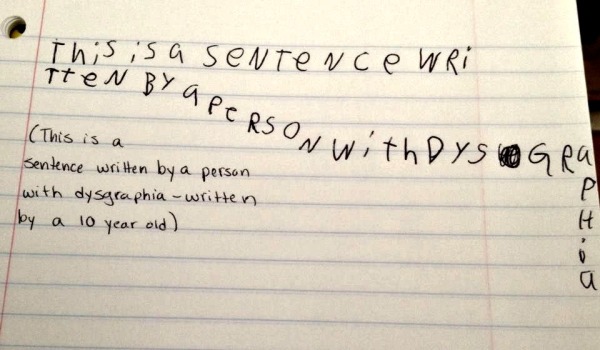Dysgraphia, according to Wikipedia, involves a lack of coordination between what is heard of seen and the ability to write it down. Dysgraphia usually occurs only in handwriting (which, lamentably, a lot of schools are no longer teaching. Keyboard skills are considered more relevant). It can also occur in printing, but won’t show up as readily as when a child is learning cursive (connected) writing. It has been my experience that kids who have trouble with dysgraphia often prefer to print. They make fewer mistakes that way.
Here’s a more thorough article about dysgraphia:
https://en.wikipedia.org/wiki/Dysgraphia
This is the kind of paper a dysgraphic student may come up with:
I actually became fairly adept at figuring out how to read these papers. You find a rhythm after a while, and begin to recognize patterns.
And here’s an interesting graphic that may help you understand the subject better:

One more:

And a really good website offering insight and help:
Click to access 147_Dysgraphia.pdf
The bottom line here is that not every student is capable of producing a paper that has beautiful handwriting or precise printing. For some, writing/printing can be an agony of erasures, cross outs, and start overs. These kids need encouragement, not criticism. They’re probably doing the best they can, and they’re frustrated beyond bearing when, no matter how hard they try, their papers are handed back to them with the word MESSY printed across the top.
They know it’s messy. They just don’t know how to make it better.

